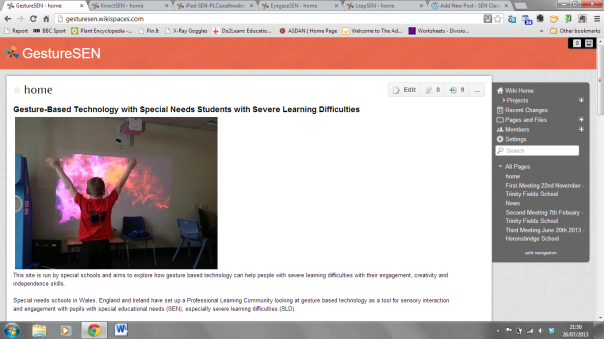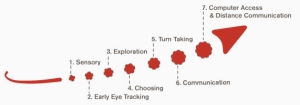Blog Archives
Time to Reflect
The start of the new academic year, gives me chance to reflect on the year ahead. This is the second year in a row that I have started a new position, Last year, I was fortunate to be offered a middle leadership role as Head of Year 11. I really enjoyed taking on the challenge of leading a year team to ensure that we provided a safe and enjoyable environment for our year 11 to achieve. I work in a generic special school and I was pleased with how successful the whole team were in ensuring our students applied themselves to their learning and developed as young people throughout the year. There were certainly challenges along the way, but I look back with very fond memories of the year,
This year, our school has undergone a major reorganisation – in terms of how our students cohorts are arranged. Rather than being year based, we have moved to a more needs based system with different hubs for moderate learning difficulties (MLD), severe learning difficulties (SLD), Profound and Multiple Learning Difficulties (PMLD) and the 6th Form. The thinking behind this, is that we will be better placed to ensure that the resources for specific students can be utilised more and that by teaching in need groups – progress can be shown more clearly. Obviously this smacks inclusion in the face a little, but we have a Complex needs coordinator who role is to ensure that where appropriate students have the opportunity for inclusion across different areas of the school. Now my role has changed too – I am now Curriculum Leader for the 6th Form responsible for ensuring that we have a dynamic and appropriate curriculum for the many different types of learners that we have in the 6th Form. I think there are 7 different curriculum’s running alongside each other, which is great for providing a tailor made curriculum for the majority of our students, I have written briefly about creating a 6th curriculum before. I am very much looking forward to this role and the challenges it creates in the currant climate of changes to OFSTED inspections.
Contrary to some people’s beliefs, special schools are still inspected using the same OFSTED criteria than all school s in the UK. We have the benefit of using the SEN progression guidance to help us justify the slower rates of progress for students with SLD and PMLD, however MLD are expected to make the same levels of progress and this gets mixed into the overall picture when OFSTED make their judgement. We had the pleasure of Her Majesty;s inspectors come visit earlier this year. There are many things to be celebrated about school (emotional well being, exceptional performance in the Arts, outstanding vocational provision) unfortunately under the new criteria we were classed as requires Improvement as the progress in Maths and English was not rapid and sustained enough.
This has led to a change in focus as our school for the new academic year, we are now putting in place more focus on literacy and numeracy across the whole school. I for one am quite excited by the challenge of this and to a certain extent agree that we should have the high expectations of our students to achieve in literacy and numeracy regardless of ability. However, I think that OFSTED need to recognise the appropriateness of what we mean by literacy and numeracy, For one student this might be developing their writing skills however for as more severe student this might be improving their communication skills so that they can effectively communicate their needs and wants. For our SLD students in the 6th Form it is about developing their numeracy and literacy skills to enable them to become more independent in their lives for when they leave school.
No matter what we think about OFSTED and whether we agree with the hoop jumping or not, being in the position our school is in we have no choice and have to look at the priorities to ensure that the next time they come to visit we have done everything we can to show an upward trend in progress in the core subjects, Not being a English or Maths specialist I am slightly nervous, but looking forward to developing my knowledge of teaching these subjects and looking at new and exciting ways to be able to deliver these across the life skills curriculum that I deliver in the sixth form.
Looking around a colleagues today, there was a real sense of togetherness that we as a staff team want to ensure the best for our students and I am quietly confident that we will give the students the best opportunity to shine in these subjects, not just for OFSTED but because it is the right thing to do.
Gesture Based Technology Wiki
Since the Gesture based Technology PLC was created in November last year, our focus has expanded to many devices and this has led to the setup of a central portal page that links to all the hardware that we are currently using with our students.
So if you are interested in using iPads, Eyegaze, Kinect, LeapMotion or any gesture based tech visit the GestureSEN wiki for information about how to use these devices to promote engagement, movement and creativity with students with severe learning difficulties.
Kinect PLC Meeting 7th Feb
It’s been 3 months since the last Kinect meeting and this meeting gave the opportunity for the schools to share their early journeys in using gesture based technology.
The morning consisted of Heronsbridge, Trinity Fields and Oak Grove sharing their evidence of using the Kinect so far. The videos showcased some brilliant examples of how the technology is engaging those students who are often hard to engage. In addition, it highlighted that the sessions need to be short with the use of different programs to keep the students interest especially with those working at P4 – P6. Another point that the PLC has to consider is getting the technology embedded in classrooms to allow staff and students to use it without having to set it up each time. This is one of the aims for Oak Grove College and something that I want to work on with staff over the next few months (hopefully our sensory room setup will be complete soon!!)
Andrew Walker (@andtomac) then presented on using a evidence based system to help the PLC record progress of students using the Kinect. At Exeter House School, they have been using the Engagement Profile and Scale developed by SSAT Complex Learning Difficulties and Disabilities Research Project. This has been developed to support staff to focus on the child’s engagement as a learner and create personalised learning pathways. There is also free online training available from the DFE website which talks through how to use the profile and scale. It certainly seems to be a logical step for the PLC to use this as an assessment framework and it will be useful to compare evidence at the next PLC meet.
After a short break, Dr Wendy Kay-Bright (Reader of Inclusive Design at Cardiff University and developer of Somantics and Reactikles) talked through the background story of how these apps came to fruition and gave a brilliant insight into the journey the team had been on. it was great to get a better understanding of how and why the apps came to fruition and Wendy gave some excellent advice on developing applications for students with ASC. What was great to hear was how the students were involved in the process from the beginning. Below are the slides from the presentation:
After lunch, Hector Minto (@hminto) gave a talk about the use of EyeGaze technology as a tool to promote sensory exploration and early tracking to aid reading assessment. The presentation focused on the EyeGaze Learning Curve and how the system could be used to move students along this curve from sensory exploration right up to communication.
Hector concentrated on the first two stages of the curve, Sensory and Eye Tracking. He demonstrated the SensoryFX software which is used to engage students and train the using EyeGaze system. The activities are designed to engage students so that you can develop their skills using a range of different programs. The next stage of eye tracking was demonstrated using a simple e-book and I have included a video to showcase this in more detail. What good to see here is that you are actually able to track where the students is looking and you can test comprehension by asking key questions. (You will need to look closely to see the cursor.)
The price of EyeGaze has reduced considerably and I believe now that it is at a stage where it is worth considering. It gives practitioners another tool to help with assessment and allow progress be shown with students working at the lower end of the P-levels, where progress is more difficult to show.
At the end of the day, the group discuss the next steps and what each school would do before the next meeting. it was a great day and brilliant to see so many different practitioners from teachers, researchers, developers and consultants looking to promote the use of gesture-based technology with SEN students.
If you are interested in finding out more please visit the PLC wiki which contains more information in using the Kinect with SEN and showcases some of the evidence that is being collected.



